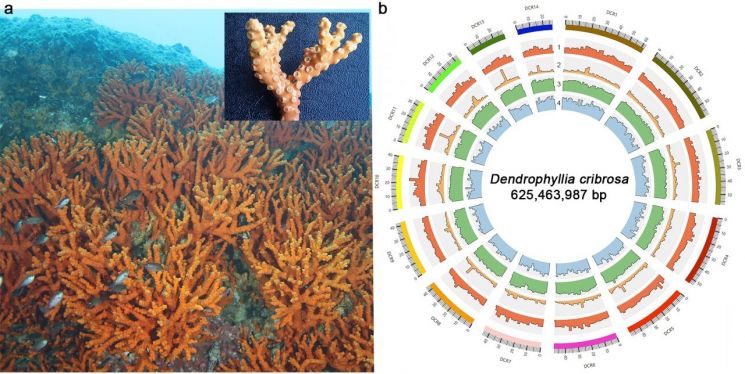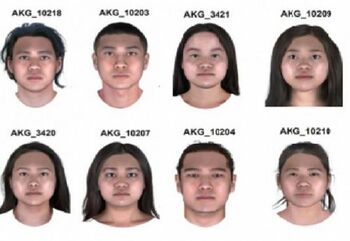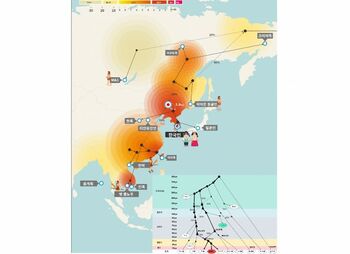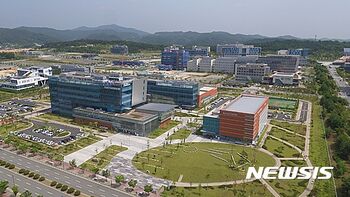Difference between revisions of "PageM3P1"
From PGI
| Line 8: | Line 8: | ||
= 2022 = | = 2022 = | ||
<div style="display: flex;"><div class="notion-focusable" role="button" style="user-select: none; transition: background 20ms ease-in 0s; cursor: pointer; width: 100%; display: flex; flex-wrap: wrap-reverse; align-items: stretch; text-align: left; overflow: hidden; border: 1px solid rgba(55, 53, 47, 0.16); border-radius: 3px; position: relative; color: inherit; fill: inherit;"><div style="flex: 4 1 180px; padding: 12px 14px 14px; overflow: hidden; text-align: left;"><div style="font-size: 14px; line-height: 20px; color: rgb(55, 53, 47); white-space: nowrap; overflow: hidden; text-overflow: ellipsis; min-height: 24px; margin-bottom: 2px;">[https://view.asiae.co.kr/article/2022100609041475741 국내 최대 군락 ‘독도 산호’ 어떻게 살았나? … KIOST, 멸종위기종 ‘유착나무돌산호’ 유전체 규명]</div> <div style="font-size: 12px; line-height: 16px; color: rgba(55, 53, 47, 0.65); height: 40px; overflow: hidden;">[아시아경제 영남취재본부 김용우 기자] 남해와 동해안 일부 지역에 서식하며 멸종위기종으로 알려진 ‘독도 산호’의 유전체를 국내 연구진이 규명했다. 연구 대상은 유착나무돌산호라는 해양 고착 생물종인데 독도에서 국내 최대 규모의 군락지가 발견돼 이른바 독도 산호라 불린다.</div> <div style="display: flex; margin-top: 6px;"><div style="font-size: 12px; line-height: 16px; color: rgb(55, 53, 47); white-space: nowrap; overflow: hidden; text-overflow: ellipsis;">[https://view.asiae.co.kr/article/2022100609041475741 https://view.asiae.co.kr/article/2022100609041475741]</div> </div> </div> <div style="flex: 1 1 180px; display: block; position: relative;"><div style="position: absolute; inset: 0px;"><div style="width: 100%; height: 100%;">[[File:DCR.jpg|DCR.jpg]]</div> </div> </div> </div> </div> | <div style="display: flex;"><div class="notion-focusable" role="button" style="user-select: none; transition: background 20ms ease-in 0s; cursor: pointer; width: 100%; display: flex; flex-wrap: wrap-reverse; align-items: stretch; text-align: left; overflow: hidden; border: 1px solid rgba(55, 53, 47, 0.16); border-radius: 3px; position: relative; color: inherit; fill: inherit;"><div style="flex: 4 1 180px; padding: 12px 14px 14px; overflow: hidden; text-align: left;"><div style="font-size: 14px; line-height: 20px; color: rgb(55, 53, 47); white-space: nowrap; overflow: hidden; text-overflow: ellipsis; min-height: 24px; margin-bottom: 2px;">[https://view.asiae.co.kr/article/2022100609041475741 국내 최대 군락 ‘독도 산호’ 어떻게 살았나? … KIOST, 멸종위기종 ‘유착나무돌산호’ 유전체 규명]</div> <div style="font-size: 12px; line-height: 16px; color: rgba(55, 53, 47, 0.65); height: 40px; overflow: hidden;">[아시아경제 영남취재본부 김용우 기자] 남해와 동해안 일부 지역에 서식하며 멸종위기종으로 알려진 ‘독도 산호’의 유전체를 국내 연구진이 규명했다. 연구 대상은 유착나무돌산호라는 해양 고착 생물종인데 독도에서 국내 최대 규모의 군락지가 발견돼 이른바 독도 산호라 불린다.</div> <div style="display: flex; margin-top: 6px;"><div style="font-size: 12px; line-height: 16px; color: rgb(55, 53, 47); white-space: nowrap; overflow: hidden; text-overflow: ellipsis;">[https://view.asiae.co.kr/article/2022100609041475741 https://view.asiae.co.kr/article/2022100609041475741]</div> </div> </div> <div style="flex: 1 1 180px; display: block; position: relative;"><div style="position: absolute; inset: 0px;"><div style="width: 100%; height: 100%;">[[File:DCR.jpg|DCR.jpg]]</div> </div> </div> </div> </div> | ||
| − | + | | |
<div style="display: flex;"><div class="notion-focusable" role="button" style="user-select: none; transition: background 20ms ease-in 0s; cursor: pointer; width: 100%; display: flex; flex-wrap: wrap-reverse; align-items: stretch; text-align: left; overflow: hidden; border: 1px solid rgba(55, 53, 47, 0.16); border-radius: 3px; position: relative; color: inherit; fill: inherit;"><div style="flex: 4 1 180px; padding: 12px 14px 14px; overflow: hidden; text-align: left;"><div style="font-size: 14px; line-height: 20px; color: rgb(55, 53, 47); white-space: nowrap; overflow: hidden; text-overflow: ellipsis; min-height: 24px; margin-bottom: 2px;">[https://www.dongascience.com/news.php?idx=54949 삼국시대인은 현대 한국인과 닮았다...게놈 최초 분석 결과]</div> <div style="font-size: 12px; line-height: 16px; color: rgba(55, 53, 47, 0.65); height: 40px; overflow: hidden;"> | <div style="display: flex;"><div class="notion-focusable" role="button" style="user-select: none; transition: background 20ms ease-in 0s; cursor: pointer; width: 100%; display: flex; flex-wrap: wrap-reverse; align-items: stretch; text-align: left; overflow: hidden; border: 1px solid rgba(55, 53, 47, 0.16); border-radius: 3px; position: relative; color: inherit; fill: inherit;"><div style="flex: 4 1 180px; padding: 12px 14px 14px; overflow: hidden; text-align: left;"><div style="font-size: 14px; line-height: 20px; color: rgb(55, 53, 47); white-space: nowrap; overflow: hidden; text-overflow: ellipsis; min-height: 24px; margin-bottom: 2px;">[https://www.dongascience.com/news.php?idx=54949 삼국시대인은 현대 한국인과 닮았다...게놈 최초 분석 결과]</div> <div style="font-size: 12px; line-height: 16px; color: rgba(55, 53, 47, 0.65); height: 40px; overflow: hidden;"> | ||
삼국시대 한반도에 살았던 한국인은 현대 한국인과 상당히 닮았다는 분석이 나왔다. 삼국시대 한반도인의 유전체(게놈)을 처음으로 분석한 연구결과로 삼국시대 이후 한국인의 유전적 연속성이 큰 것으로 분석됐다. 울산과학기술원(UNIST)은 UNIST게놈센터, 국립중앙박물관, 국립김해박물관, 서울대, 게놈연구재단, 오스트리아 비엔나대, 클리노믹스 공동 연구를 통해 이같은 연구결과를 국제학술지 '커런트 바이올로지' 21일자(현지시간)에 발표했다고 밝혔다. 연구팀은 서기 300~500년 가야 지역 무덤 주인과 순장된 이들의 유골의 게놈을 분석했다. | 삼국시대 한반도에 살았던 한국인은 현대 한국인과 상당히 닮았다는 분석이 나왔다. 삼국시대 한반도인의 유전체(게놈)을 처음으로 분석한 연구결과로 삼국시대 이후 한국인의 유전적 연속성이 큰 것으로 분석됐다. 울산과학기술원(UNIST)은 UNIST게놈센터, 국립중앙박물관, 국립김해박물관, 서울대, 게놈연구재단, 오스트리아 비엔나대, 클리노믹스 공동 연구를 통해 이같은 연구결과를 국제학술지 '커런트 바이올로지' 21일자(현지시간)에 발표했다고 밝혔다. 연구팀은 서기 300~500년 가야 지역 무덤 주인과 순장된 이들의 유골의 게놈을 분석했다. | ||
</div> <div style="display: flex; margin-top: 6px;"><div style="font-size: 12px; line-height: 16px; color: rgb(55, 53, 47); white-space: nowrap; overflow: hidden; text-overflow: ellipsis;">[https://www.dongascience.com/news.php?idx=54949 https://www.dongascience.com/news.php?idx=54949]</div> </div> </div> <div style="flex: 1 1 180px; display: block; position: relative;"><div style="position: absolute; inset: 0px;"><div style="width: 100%; height: 100%;">[[File:Originface.jpg|350px|Originface.jpg]]</div> </div> </div> </div> </div> | </div> <div style="display: flex; margin-top: 6px;"><div style="font-size: 12px; line-height: 16px; color: rgb(55, 53, 47); white-space: nowrap; overflow: hidden; text-overflow: ellipsis;">[https://www.dongascience.com/news.php?idx=54949 https://www.dongascience.com/news.php?idx=54949]</div> </div> </div> <div style="flex: 1 1 180px; display: block; position: relative;"><div style="position: absolute; inset: 0px;"><div style="width: 100%; height: 100%;">[[File:Originface.jpg|350px|Originface.jpg]]</div> </div> </div> </div> </div> | ||
| + | | ||
| − | + | | |
| − | |||
= 2020 = | = 2020 = | ||












